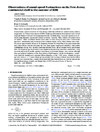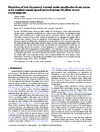Observations of sound-speed fluctuations on the New Jersey continental shelf in the summer of 2006
| dc.contributor.author | Colosi, John A. | |
| dc.contributor.author | Duda, Timothy F. | |
| dc.contributor.author | Lin, Ying-Tsong | |
| dc.contributor.author | Lynch, James F. | |
| dc.contributor.author | Newhall, Arthur E. | |
| dc.contributor.author | Cornuelle, Bruce D. | |
| dc.date.accessioned | 2019-06-04T20:25:56Z | |
| dc.date.available | 2019-06-04T20:25:56Z | |
| dc.date.issued | 2012-02 | |
| dc.identifier.citation | Journal of the Acoustical Society of America 131 (2012): 1733-1748, doi:10.1121/1.3666014. | en_US |
| dc.identifier.citation | Journal of the Acoustical Society of America 131 (2012): 1733-1748 | en_US |
| dc.identifier.uri | https://hdl.handle.net/10945/62421 | |
| dc.description | The article of record as published may be found at https://doi.org/10.1121/1.3666014 | en_US |
| dc.description.abstract | Environmental sensors moored on the New Jersey continental shelf tracked constant density surfaces (isopycnals) for 35 days in the summer of 2006. Sound-speed fluctuations from internal-wave vertical isopycnal displacements and from temperature/salinity variability along isopycnals (spiciness) are analyzed using frequency spectra and vertical covariance functions. Three varieties of internal waves are studied: Diffuse broadband internal waves (akin to waves fitting the deep water Garrett/Munk spectrum), internal tides, and, to a lesser extent, nonlinear internal waves. These internal-wave contributions are approximately distinct in the frequency domain. It is found that in the main thermocline spicy thermohaline structure dominates the root mean square sound-speed variability, with smaller contributions coming from (in order) nonlinear internal waves, diffuse internal waves, and internal tides. The frequency spectra of internal-wave displacements and of spiciness have similar form, likely due to the advection of variable-spiciness water masses by horizontal internal-wave currents, although there are technical limitations to the observations at high frequency. In the low-frequency, internal-wave band the internal-wave spectrum follows frequency to the −1.81 power, whereas the spice spectrum shows a −1.73 power. Mode spectra estimated via covariance methods show that the diffuse internal-wave spectrum has a smaller mode bandwidth than Garrett/Munk and that the internal tide has significant energy in modes one through three. | en_US |
| dc.description.sponsorship | This work was supported by the Office of Naval Research, and Professor Colosi gratefully acknowledges his additional support from the Naval Postgraduate School’s Undersea Warfare Chair that he holds. | en_US |
| dc.language.iso | en_US | en |
| dc.publisher | Acoustical Society of America | en_US |
| dc.subject | Tides | en_US |
| dc.subject | Underwater sound | en_US |
| dc.title | Observations of sound-speed fluctuations on the New Jersey continental shelf in the summer of 2006 | en_US |
| dc.type | Article | en_US |





